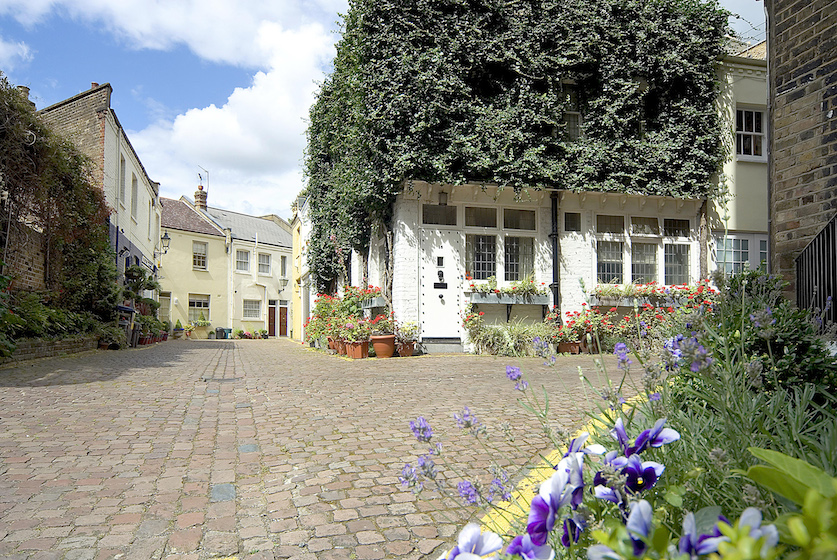FASHIONABLE COBBLES


“Cobbles are coming back as a distinctive design element in public areas. Landscapers have rediscovered the many artistic layouts cobbles used to be laid in, such as circles, fans, diamonds and chains, and have woken up to what mews residents have known all the time – cobbles are practical, hard-wearing and one of the most attractive road surfaces you can get.”
Nothing evokes the vanished world of horse-drawn carriages clip-clopping through the fog than cobblestones. Cobbles have disappeared from London’s main streets but still survive in many mews.
Cobbles were the first really hard-wearing road surface, developed in Roman times. Smooth round stones from beaches or rivers were embedded in sand, mortar or clay, depending on what was locally available. Cobbled roads did not become muddy or dusty, they did not develop ruts or crack in winter frosts, and could be easily repaired. A well-maintained cobbled road can last hundreds of years.
There were downsides, of course. The lumpy surface was very hard to walk on, and the smooth stones could be very slippy. The noise of the carts on a busy highway made conversation impossible.
These drawbacks were reduced by using roughly rectangular blocks of granite known as setts, often also called Belgian blocks for some reason – they don’t come from Belgium.
A road made of setts is much flatter and the surface is rougher, so it is much easier and safer to walk on. Most of the ‘cobbled’ roads in London today are actually setts.
Nowadays our main roads are covered in acres of practical but boring asphalt, but many mews still feature the lovely natural grey-black lumpy surface of setts, a gutter of larger setts forming a line down the middle to add structure.
Bathurst Mews, just to the north of Hyde Park, is one of the best places to admire cobbles as it is the home of many of the horses that use the park so you can often hear the clatter of the hooves as they head out for Rotten Row.
After nearly a century of disuse, setts and cobbles are making a comeback. Setts are increasingly being used in areas that are mainly used by pedestrians but also need to support the weight of delivery trucks.
